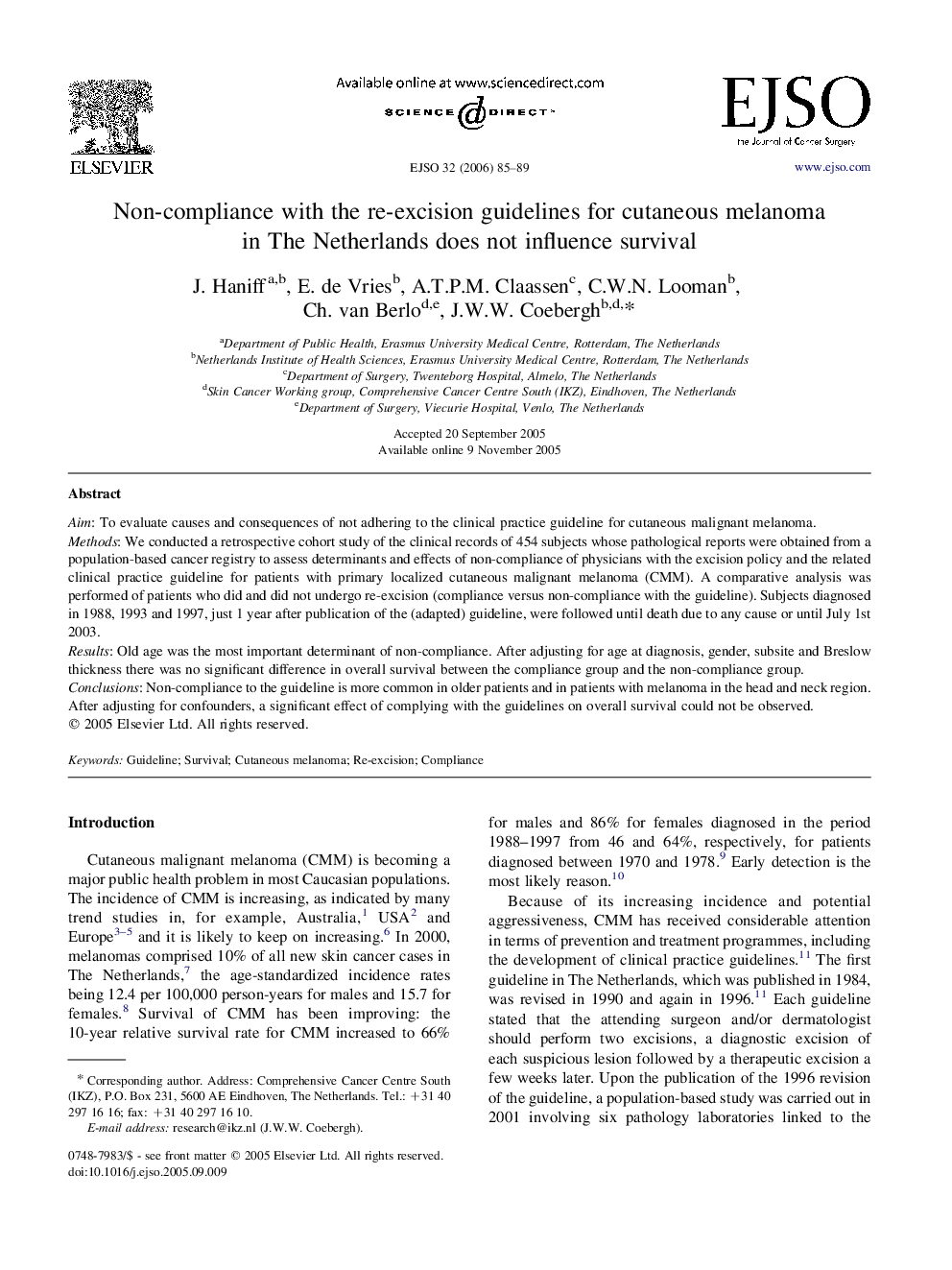| کد مقاله | کد نشریه | سال انتشار | مقاله انگلیسی | نسخه تمام متن |
|---|---|---|---|---|
| 3988542 | 1601490 | 2006 | 5 صفحه PDF | دانلود رایگان |

AimTo evaluate causes and consequences of not adhering to the clinical practice guideline for cutaneous malignant melanoma.MethodsWe conducted a retrospective cohort study of the clinical records of 454 subjects whose pathological reports were obtained from a population-based cancer registry to assess determinants and effects of non-compliance of physicians with the excision policy and the related clinical practice guideline for patients with primary localized cutaneous malignant melanoma (CMM). A comparative analysis was performed of patients who did and did not undergo re-excision (compliance versus non-compliance with the guideline). Subjects diagnosed in 1988, 1993 and 1997, just 1 year after publication of the (adapted) guideline, were followed until death due to any cause or until July 1st 2003.ResultsOld age was the most important determinant of non-compliance. After adjusting for age at diagnosis, gender, subsite and Breslow thickness there was no significant difference in overall survival between the compliance group and the non-compliance group.ConclusionsNon-compliance to the guideline is more common in older patients and in patients with melanoma in the head and neck region. After adjusting for confounders, a significant effect of complying with the guidelines on overall survival could not be observed.
Journal: European Journal of Surgical Oncology (EJSO) - Volume 32, Issue 1, February 2006, Pages 85–89